From Silence to Strategy: Using Student Feedback for Effective Anti-Bullying Initiatives











Are your district's anti-bullying initiatives falling short? If you're not hearing the full story from your students, you're missing the quiet crisis happening in your hallways.
Left unchecked, bullying in schools can lead to lagging school attendance and chronic absenteeism—negatively impacting academic achievement, student well-being, educator workforce excellence, and district funding.
As a leader, you understand the importance of maintaining your anti-bullying initiatives throughout the year; however, October’s National Bullying Prevention Month presents a critical opportunity to raise awareness, assess your anti-bullying efforts, and collaborate with your students.
In this Article
Amplifying student voice is essential for tackling bullying in schools and creating safe school cultures and thriving districts. Discover the true cost of bullying in schools and how a comprehensive AI engagement platform can help your students speak up—allowing you to uncover effective anti-bullying strategies without compromising student safety.
Bullying and chronic absenteeism
Bullying isn't just a mental health issue or a school climate problem; it's often a direct barrier to a student's access to education. As authors Laith and Vaillancourt (2022) put it, bullying is a "global health problem that often prevents children from achieving their fundamental right to education.”
This means that when leaders address bullying, they’re simultaneously tackling chronic absenteeism. ThoughtExchange customer and seasoned superintendent, Dr. Quintin Shepherd, pointed out this simple truth: "If the kids aren't present, they can't learn.”
The link between bullying and absenteeism is clear and measurable:
- Studies have shown that “being a victim of cyber, physical, or relational bullying was associated with increased absences.”
- The effects can be dramatic. In a recent school climate survey, one of our customers discovered that bullying accounted for a notable 67% of absences.
The impacts of bullying in schools run deep, affecting everything from student mental health to key aspects of a school’s climate and culture—and directly keeping students out of the classroom.
Choosing the right student engagement platform
ThoughtExchange offers a safe and effective platform to amplify student voice and understand your students’ most pressing concerns, ensuring your anti-bullying initiatives meet their needs. The platform protects student privacy and security to nurture a safe, supportive space where learning and collaboration can thrive.
Use ThoughtExchange to gather and analyze critical insights quickly and easily. Consider using surveys, Exchanges, or Advanced Engagements (Beta) for actionable insights.
Read: Responsible AI Integration: 4 Steps for Education Leaders.
Surveys
Structured surveys are ideal for gathering quick, targeted quantitative student feedback on anti-bullying and school climate, as well as measuring their specific attitudes, behaviors, or opinions.
ThoughtExchange surveys are interactive, allowing your students to share the details behind their answers. A more engaging student survey experience means fewer participant drop-offs. This allows leaders to gain higher participation, more nuanced data, and increased community trust.
Exchanges
Exchanges are perfect for gathering qualitative student feedback and prioritizing their ideas and opinions. These scaled group discussions encourage participants to share thoughts and ideas in response to a broad, open-ended question or prompt. Students can see and rate one another’s ideas, surfacing the most important feedback.
Advanced Engagements (Beta)
Advanced Engagements (Beta) are a smart way to gather feedback using multiple question types, AI-driven insights, and adaptive data collection.
- Easily customize your engagements by adding your prioritized survey component.
- Validate participants’ responses with a contextual summary.
- Generate a contextual question based on a previous response (available for Engagement 360 customers only).
With Advanced Engagements (Beta), leaders can drive deeper, more meaningful conversations with their students using qualitative and quantitative data collection methods. By delivering emotionally aware, dynamic engagements, leaders benefit from deeper student feedback and better, faster decision-making. Leaders also save time with intelligent templates and intuitive tools.
Utilize these ThoughtExchange tools to efficiently gather and analyze student feedback, informing anti-bullying strategies and decisions with clear, actionable takeaways.
Moderation best practices for student feedback
Gathering honest insights while maintaining a safe, supportive environment for your students can be challenging. Hateful or negative comments undermine trust-building efforts, discouraging engagement. The solution: moderation tools.
Moderation is essential for filtering harmful content and protecting participants. Moreover, a district’s commitment to moderation demonstrates to students that their safety is a priority, fostering trust and encouraging more honest participation over time.
As a leader, deciding when and how to moderate your participants’ thoughts is a critical step in planning your engagement. It’s essential to respect and acknowledge all feedback you receive, while removing thoughts that are inappropriate, disrespectful, or that identify individuals.
These moderation best practices can help.
Less is more
At ThoughtExchange, we recommend only removing thoughts that:
- Are rude or hurtful to a person or group of people
- Identify individuals (either by name or by affiliation with a small group)
- Don’t answer the question (meaning they are unintelligible or blank - off-topic thoughts are not included in this category)
- Are duplicate thoughts from the same participant
Communicate clearly
Communication is the key to a successful engagement. Once you decide on your approach, let your students know. Set expectations before they begin sharing their thoughts. This will ensure you have fewer thoughts to moderate and happier participants.
Be prepared
Monitoring your conversation is important. If your topic turns out to be more contentious than you thought, consider assigning someone to check in on results throughout the day and remove thoughts that violate the moderation criteria.
Once you've considered the philosophy and best practices behind moderation, it's time to choose a method. ThoughtExchange offers options like hiding reported thoughts, community moderation, and machine moderation.
Learn more about moderation methods.
Real-world impact: customer stories
ThoughtExchange customers put the platform to work for them to gather critical insights from their students—with positive results. Here’s what they have to say:
“We use adults to vet curriculum and resources, but we miss the student perspective in all of it. And we’ve got to do better. Building student agency, allowing students to have voice and ownership on what’s in front of them, is crucial, and ThoughtExchange allows that opportunity on such a grand scale.”
“Our adolescent students want to be seen and heard. They're watching so many things happen on social media and how people misuse it. Here's an opportunity to use their voice in a way that is safe to make changes and be a part of the changes. That sense of belonging is what we want all of our scholars to feel. It's legacy work.”
Fostering a safe culture and thriving district with ThoughtExchange
The most effective anti-bullying initiative is the one your students support! By leveraging safe and effective AI-powered engagement platforms like ThoughtExchange, leaders can confidently implement student feedback—an essential step for creating and sustaining effective anti-bullying initiatives.
Go beyond raising awareness during National Bullying Prevention Month by gathering honest, unfiltered insights on your school culture year-round. When paired with strong moderation best practices, this builds student trust and encourages authentic participation.
Prioritizing secure student feedback is not just a reactive measure, but a proactive strategy that fosters belonging and helps drive meaningful, positive change toward a safer, more inclusive environment for all students.
Amplify student voice and experience systemic improvements from attendance to academic achievement to district funding, and more.






